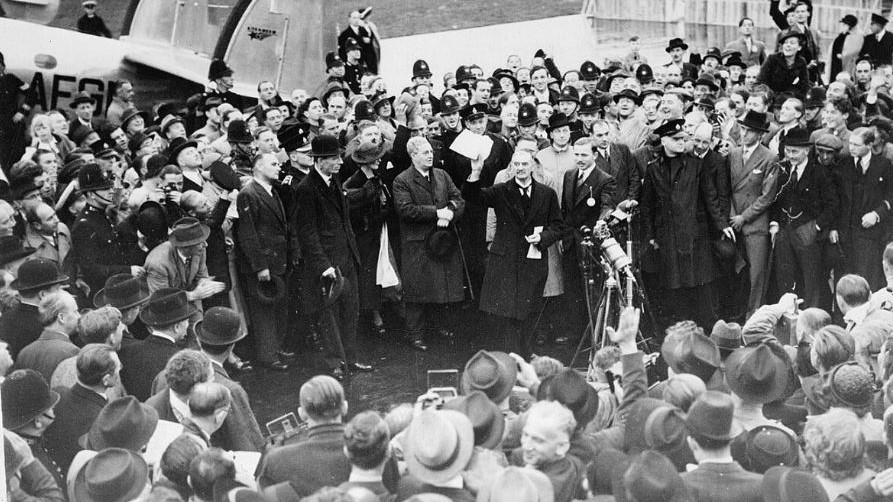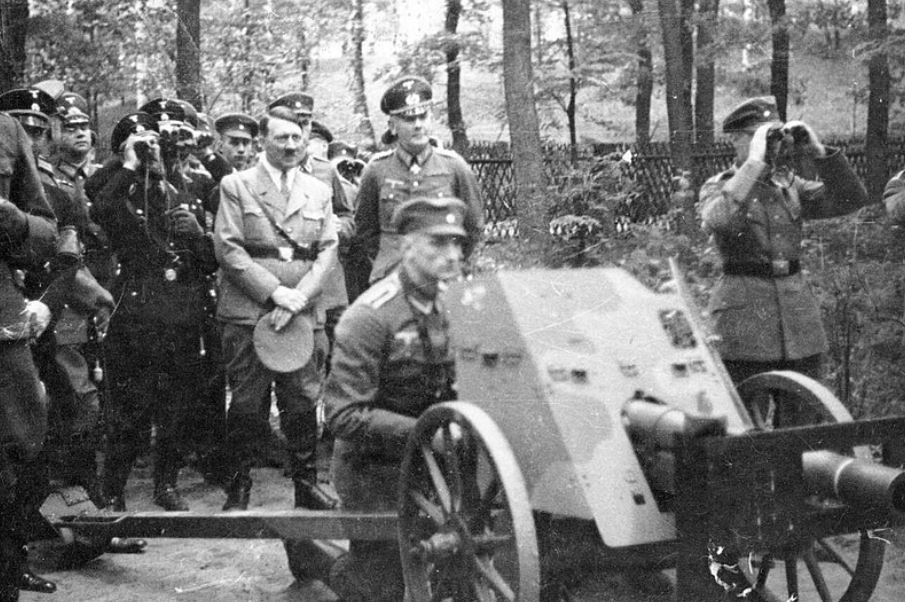The Battle of Kursk, fought from July 5 to August 23, 1943, marked a critical moment in World War 2.
As the largest tank battle in history, it not only highlighted the massive scale of conflict on the Eastern Front but also symbolized the turning tide against Nazi Germany.
This article explores the strategic reasons for and against Germany’s decision to engage in this monumental battle, questioning whether the offensive was a prudent military strategy or a reckless gamble.
1. Leading up to the Battle of Kursk
By the summer of 1943, the Eastern Front had become a theater of unprecedented violence and attrition.
Following the catastrophic defeat at Stalingrad in early 1943, the German military found itself reeling. The loss of nearly 300,000 troops, along with significant material losses, had severely weakened their strategic position.
In an attempt to regain the initiative, Hitler’s high command devised a plan to launch a major offensive aimed at the Kursk salient—a bulge in the Soviet lines that presented a tempting opportunity for encirclement.
The Kursk salient, stretching approximately 150 miles north to south and 100 miles east to west, was home to nearly 2 million Soviet troops and an extensive network of defensive fortifications.
In contrast, the Germans mustered around 800,000 soldiers and thousands of tanks, including new models like the Panther and Tiger.
The stakes were high; a successful offensive could potentially inflict devastating losses on the Red Army and restore German morale. However, the decision to undertake this battle was fraught with risks that warrant careful examination.
2. Strategic Reasons For Undertaking the Battle of Kursk

The German Desire for a Decisive Victory at Kursk
One of the primary motivations behind the German offensive at Kursk was the urgent need to regain momentum following the humiliating defeat at Stalingrad.
Stalingrad marked a significant turning point in World War 2, where the loss of an entire army had shattered not only the Wehrmacht’s operational capabilities but also the morale of both troops and the German populace.
Hitler and his generals believed that a significant victory at Kursk could serve as a much-needed psychological boost.
In a war where morale was increasingly fragile, the prospect of a decisive victory loomed large. A successful operation at Kursk would rejuvenate the German war effort, demonstrating to both the military and the public that the Wehrmacht was still capable of achieving significant objectives despite previous setbacks.
Such a victory would allow the Nazi regime to project an image of strength, portraying itself as still on the offensive rather than on the defensive.
The political implications of a decisive victory cannot be understated.
Maintaining domestic support for the war effort was critical for the Nazi regime, which relied on public perception to sustain its grip on power. A triumphant campaign at Kursk could help rally the populace, inspiring confidence in the leadership and reinvigorating the German spirit. This was particularly vital as discontent began to surface among the civilian population, who were weary of the protracted conflict and its associated hardships.
The Potential to Encircle Soviet Forces at Kursk
Strategically, the German plan for Kursk centered on the ambitious goal of encircling Soviet troops concentrated in the Kursk salient.
By attacking from both the north and south simultaneously, the Germans aimed to trap a significant portion of the Red Army.
This tactical maneuver was reminiscent of earlier German victories, such as the encirclements at Białystok-Minsk and Smolensk, where they had successfully trapped and destroyed large Soviet formations.
The potential to inflict severe losses on the Soviets was highly enticing for military planners. Estimates suggested that a successful encirclement could lead to the capture of hundreds of thousands of Soviet soldiers, delivering a crippling blow to Soviet manpower.
The ramifications of a successful encirclement at Kursk extended beyond immediate military gains.
It could have shifted the balance of power on the Eastern Front, allowing the Germans to reclaim lost territory and re-establish a more favorable strategic posture. This was crucial, as the Soviets had been steadily gaining ground, and a significant defeat could have temporarily stalled their advances, providing Germany with the opportunity to regroup and fortify its positions.
Tactical Innovation
The Battle of Kursk also presented an opportunity for Germany to showcase its military innovations and technological advancements.
New tank models, such as the Panther and Tiger, were introduced during this offensive, offering improved firepower and armor compared to earlier German tanks. The battle would allow the German military to test these vehicles in a large-scale engagement, potentially validating their tactical theories and enhancing their capabilities on the battlefield.
Furthermore, the offensive was seen as a chance to implement innovative battlefield tactics, involving combined arms operations involving infantry, armor, and air support.
This approach aimed to synchronize different branches of the military to create a more effective fighting force. By successfully demonstrating these tactics during the battle, Germany hoped to reinvigorate its military doctrine, enhancing its operational capabilities for future engagements.
The Germans Had a Limited Time Window
Another critical strategic consideration was the perceived limited time window available to the Germans.
With the Soviets steadily increasing their strength and preparing for large-scale counteroffensives, German leaders believed they needed to act swiftly to regain the initiative. The intelligence reports indicating that the Red Army was reinforcing its positions added to the urgency of launching the offensive.
Seasonal factors also played a significant role in this urgency.
The spring thaw and subsequent autumn rains would complicate large-scale movements, making the summer of 1943 a crucial period for any offensive operation.
German leaders understood that the window for a successful assault was narrowing; if they delayed too long, the opportunity might vanish, leaving them vulnerable to Soviet counteractions.
The sense of urgency created by the evolving situation on the Eastern Front reinforced the decision to undertake the Battle of Kursk.
German High command believed that a successful offensive could not only stall Soviet advances but also buy time to regroup and fortify their positions. In this context, the stakes were high, and the necessity of a bold offensive seemed imperative.
3. Strategic Reasons Against Undertaking the Battle of Kursk
German Overextension of Resources
One of the most compelling arguments against the Battle of Kursk was the overextension of German resources.
By mid-1943, the German military found itself managing multiple fronts across Europe, including the Eastern Front against the Soviet Union and the North African campaign against Allied forces.
Each front required significant manpower and logistical support, stretching the Wehrmacht thin and exposing it to vulnerabilities.
The catastrophic losses sustained during the Battle of Stalingrad, where approximately 300,000 German soldiers were killed or captured, had severely weakened Germany’s fighting capabilities. The defeat not only depleted personnel but also drained vital logistical resources. Replenishing these losses while simultaneously preparing for a new offensive presented a daunting challenge for the German high command.
Launching a large-scale offensive at Kursk would demand substantial manpower and extensive logistical backing. This included not just soldiers but also critical supplies like fuel, ammunition, and maintenance for armored vehicles.
The extensive distances involved in transporting materials across the Eastern Front exacerbated existing logistical challenges. Already strained supply lines, which had suffered due to previous engagements, risked becoming untenable in the face of a new, ambitious offensive.
Moreover, the focus on Kursk would necessitate diverting resources from other critical areas. This could weaken German positions elsewhere, making them susceptible to Soviet counterattacks.
Should the Kursk offensive fail, the Wehrmacht would find itself vulnerable and exposed, unable to respond effectively to an enemy that had been given the initiative.
Soviet Preparedness

Another critical factor complicating the German decision to engage in the Battle of Kursk was the high level of Soviet preparedness.
Intelligence reports indicated that the Soviets were not only aware of the impending German assault but had also taken significant steps to fortify their defenses in anticipation of it.
The Red Army constructed extensive networks of trenches, anti-tank positions, and minefields designed to absorb and repel the German advance.
The Germans significantly underestimated the Soviet ability to prepare and adapt in the face of adversity.
After suffering tremendous losses earlier in the war, the Soviets had learned valuable lessons and adjusted their strategies accordingly. Their capability to regroup, fortify positions, and mobilize reserves made the prospect of a successful breakthrough increasingly daunting for the Germans.
By the time of the Kursk offensive, the Soviets had developed a deeper understanding of modern warfare and had made significant improvements to their operational command and control.
The expectation that a direct assault could achieve the desired results was misplaced.
German commanders faced the prospect of attacking well-prepared and fortified positions, leading to high casualties and potential operational setbacks. Such a scenario would complicate their already tenuous situation, exposing flaws in their planning and execution.
The German Consequences of Failure

The potential consequences of a failed offensive at Kursk loomed large in the minds of German military planners.
A disastrous outcome could lead to catastrophic losses in personnel and material, further demoralizing an already strained military. Such a defeat could also have a corrosive effect on public morale back home, which was essential for sustaining support for the war effort.
A failure at Kursk would not only mean a loss of face for the German military but could also embolden Soviet forces. The Soviets, witnessing a German defeat, might view it as a validation of their strength and resilience, potentially leading to a series of successful counteroffensives. Such momentum could destabilize the German front, further eroding their military capabilities and complicating their operational planning.
The risks associated with failure were profound and raised serious questions about the wisdom of undertaking such a high-stakes battle. The balance of military power in Europe was already shifting, and a costly defeat could accelerate this trend, allowing the Allies to capitalize on German vulnerabilities.
While the ambition behind the Battle of Kursk was evident, the strategic disadvantages and risks associated with the decision ultimately highlighted the precarious nature of Germany’s position in the war.
A careful reassessment of priorities, focusing on consolidating strengths and fortifying defenses rather than risking further overextension, might have provided a more viable path forward. As history demonstrates, the implications of such military decisions can ripple through the course of a conflict, shaping not only immediate outcomes but also the long-term dynamics of power and strategy.
4. Final Thoughts on whether Germany Have Undertaken the Battle of Kursk
The decision to undertake the Battle of Kursk was a complex interplay of military strategy, psychological considerations, and logistical challenges.
On one hand, the desire for a decisive victory, the potential to encircle Soviet forces, and the opportunity for tactical innovation drove Germany’s decision to launch the offensive.
On the other hand, the overextension of resources, Soviet preparedness, and the risks associated with failure raised significant doubts about the wisdom of this course of action.
Ultimately, the battle resulted in a decisive Soviet victory, marking a turning point in the war and signaling the end of Germany’s strategic offensive capabilities in the East.
The costly engagement at Kursk not only highlighted the flaws in German planning but also underscored the resilience of the Soviet forces.
In reflecting on this critical moment in history, we gain valuable insights into the complexities of military decision-making and the high stakes involved in warfare.
While Germany’s leadership aimed for a bold offensive, the consequences of their choices serve as a reminder of the delicate balance between ambition and pragmatism in the theater of war. The Battle of Kursk remains a pivotal example of how strategic decisions can shape the course of history, highlighting the enduring importance of thoughtful military planning in the face of adversity.
Further Reading
If you enjoyed this article about Should Germany Have Undertaken the Battle of Kursk? you may be interested to read more about other wars in history, such as the American Civil War and World War 1. Here are some specific World War 2 articles:
- Who were the Ghost Division of World War 2?
- What were the German Special Forces called in World War 2?
- What Side was Ireland on in World War 2?
- Who were the Main Dictators of World War 2?
- Why did France lose so easily in World War 2?
You may also enjoy these articles about the World Wars:






